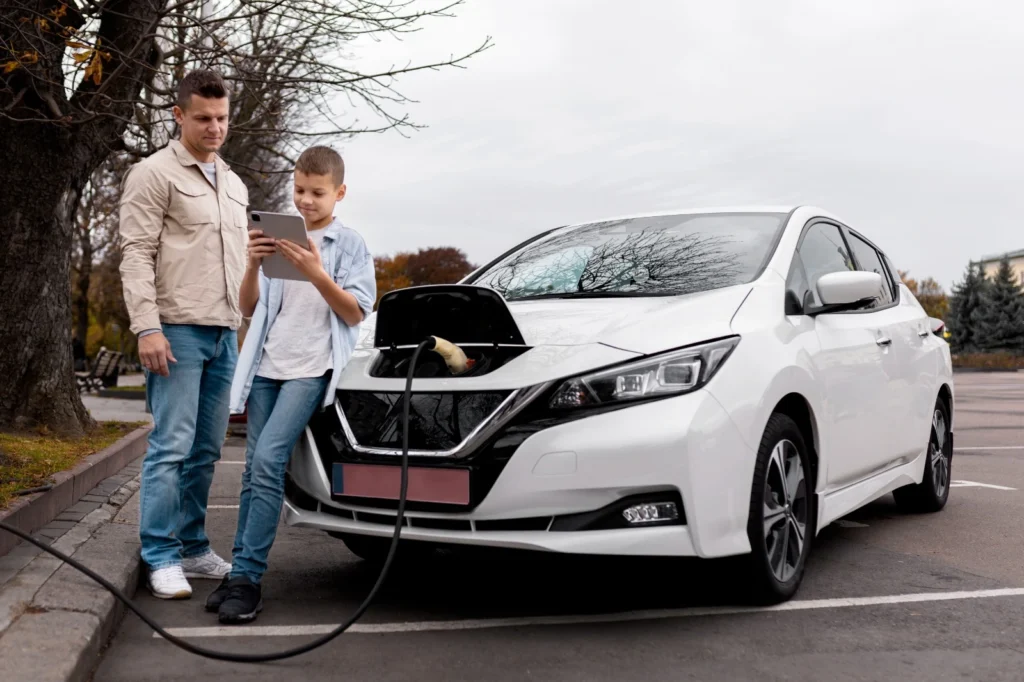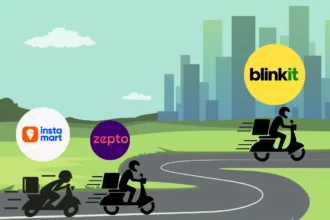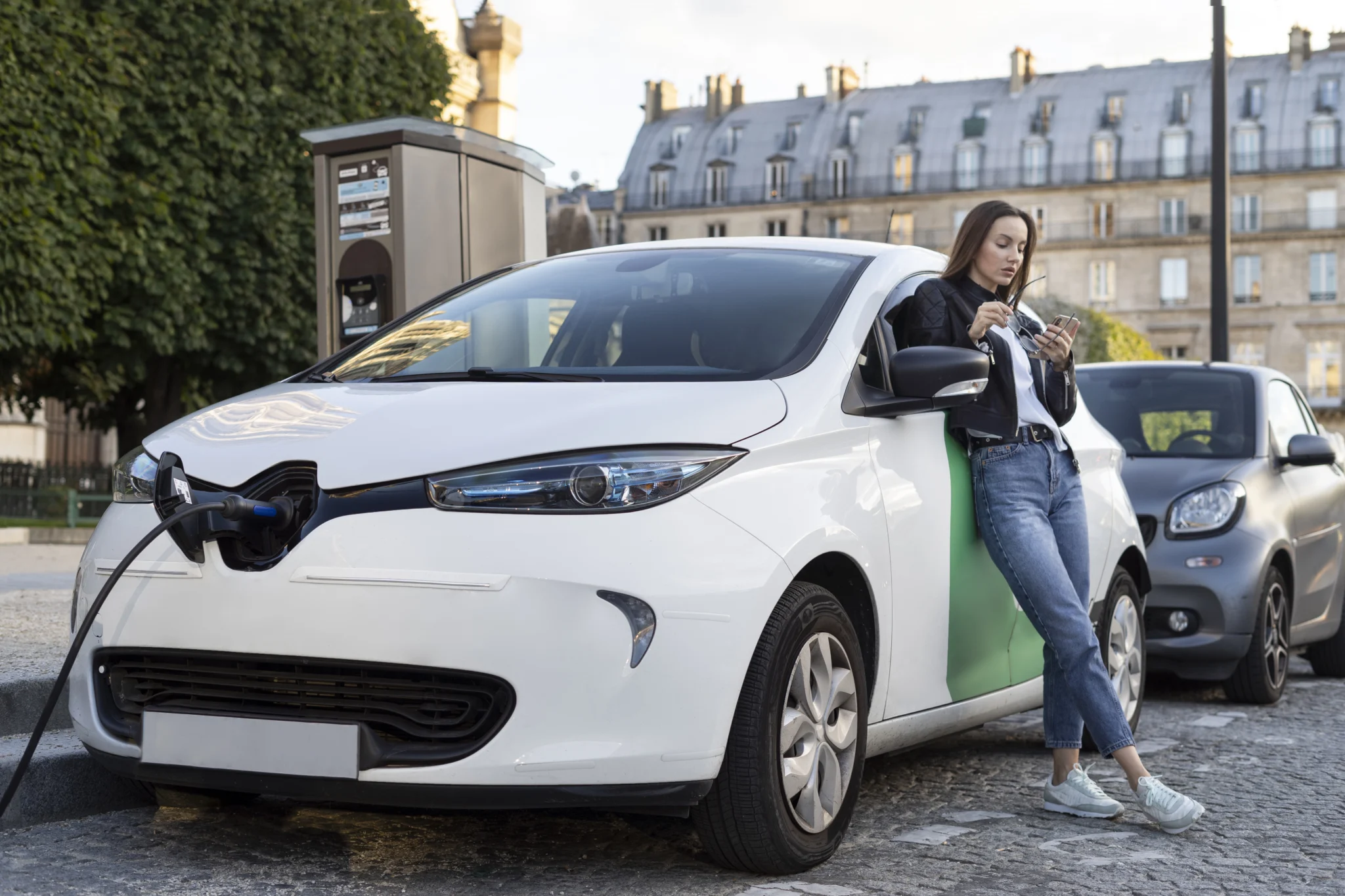Estimated Reading Time: 18 – 20 minutes (3,605 words)
Introduction
Electric vehicles (EVs) have rapidly moved from being futuristic concepts to mainstream options in India’s automotive market. What was once considered a niche choice for eco-conscious buyers has now become a serious alternative for the average car owner. In 2025, the EV industry is experiencing its strongest growth yet, thanks to a mix of government incentives, affordable financing, and technological breakthroughs in battery efficiency. From compact hatchbacks to feature-rich SUVs, Indian roads are beginning to reflect this transition in a visible way.
One of the biggest drivers behind this momentum is affordability. Battery costs, which once accounted for nearly half of an EV’s price, are steadily declining. Combined with subsidies, lower GST, and reduced registration fees in several states, EVs are inching closer to price parity with petrol and diesel cars. Add to this the rapidly growing charging infrastructure—both public fast-charging corridors and home-based solutions—and the barriers that once kept EV adoption low are starting to fall. For many buyers, the promise of low running costs and reduced maintenance is proving too attractive to ignore.
At the same time, the EV landscape is becoming more competitive. Indian brands like Tata and Mahindra are launching models across price segments, while global automakers such as MG and VinFast are introducing stylish, tech-loaded alternatives. This surge in options means buyers are spoilt for choice—but it also makes the decision more complicated. Should you prioritize a longer range for highway trips, or is fast-charging capability more important for your daily routine? Is a budget EV enough for city commutes, or should you invest in a premium SUV with advanced driver-assist features?
This article aims to simplify that decision. We’ve curated a list of the Top 10 EV cars available in India in 2025, covering their prices, ranges, features, and real-world pros and cons. Whether you’re a first-time buyer considering an entry-level EV, or a family looking for a long-range SUV that balances comfort and technology, this guide will help you navigate the trade-offs and find the EV that’s right for your needs and budget.

Why Choose EVs in India Right Now
Electric vehicles are no longer just about being trendy or futuristic—they’re quickly becoming the smarter choice for Indian buyers in 2025. From cost savings to cleaner air, here are the biggest reasons why EVs make sense today:
- Falling Costs & Easy Maintenance
Battery prices have dropped sharply, bringing EVs closer to petrol/diesel price points. With fewer moving parts, EVs also require less maintenance and have far lower running costs—charging an EV can cost 70–80% less than fueling a petrol car. - Government & State Incentives
Central schemes like FAME subsidies, reduced GST, and state policies (waiver of road tax, registration fees) make EVs more affordable. Some automakers now even offer lifetime battery warranties (e.g., Tata on select models), reducing ownership risks. - Improved Range & Charging Network
Many EVs in 2025 now deliver 500+ km certified range, making long drives feasible. DC fast chargers are being installed on major highways, while home and workplace chargers are increasingly accessible, easing range anxiety.
Environmental & Social Benefits
EVs emit no tailpipe pollution, helping cut urban smog and reduce dependence on fossil fuels. Buyers also gain a “green” edge in social perception, with sustainability becoming a valued lifestyle choice and even improving resale appeal.
What to Look for When Buying an EV
Choosing the right EV isn’t just about picking the car with the longest range or the lowest price. Since electric cars are still an evolving segment in India, buyers need to balance practical needs with long-term ownership value. Here are the most important factors to consider before making your purchase:
- Certified vs. Real-World Driving Range (ARAI/MIDC)
Manufacturers often advertise certified ranges under test conditions, but real-world driving in Indian traffic, with AC use and mixed road conditions, can be 10–25% lower. Understanding the difference ensures you don’t face unexpected range anxiety, especially on highway trips. - Charging Speed (DC Fast Charging & AC Home Charging)
Fast charging capability is critical for long journeys. Some cars support 100–150 kW DC chargers, which can add 200–300 km of range in under 30 minutes. At the same time, home AC charging (3.3 kW to 11 kW) should be checked for overnight convenience—this balance defines how practical the EV will be for your lifestyle. - Battery Warranty & Degradation
Batteries are the most expensive component in an EV, and replacement can cost several lakhs. Look for long warranties (8–10 years or even lifetime, as offered by some OEMs) and clear guarantees on minimum capacity retention. This reduces risk and gives peace of mind for resale value. - Safety Features & NCAP Ratings
Since EVs are heavier due to their batteries, crash safety is critical. Check for Bharat NCAP/Global NCAP ratings, along with features like multiple airbags, ABS, ESC, and ADAS in higher segments. Safety should never be compromised, especially when spending ₹20–50 lakh. - After-Sales Service & Parts Availability
The EV service ecosystem in India is still young. Established brands like Tata and Mahindra have wider service reach, while new entrants may have limited networks. Before buying, confirm nearby service centers, availability of spare parts, and software support. - Total Cost of Ownership (TCO)
Beyond the sticker price, consider 5- to 7-year running costs—insurance, electricity tariffs, charger installation, subsidies, and resale value. Often, EVs become cheaper than ICE cars in the long run, especially for high-mileage users. - Features & Comfort vs. Price Many EVs are loaded with tech like large touchscreens, connected apps, panoramic sunroofs, and ADAS. When prices are close across segments, features and comfort can become the deciding factor. Buyers should weigh whether the extra premium is justified by the additional convenience.
Top 10 Electric Cars in India (2025)
(Best EVs You Can Buy or Expect Soon)
| # | Model | Price (Ex-Showroom) | Battery / Motor / Performance | Certified Range | Charging Details | Pros | Cons |
|---|---|---|---|---|---|---|---|
| 1 | Mahindra BE 6 (Expected 2025) | ₹18.9 – ₹26.9 Lakh | 59 kWh / 79 kWh LFP, 228–282 bhp, RWD | 556–682 km (ARAI) | AC wallbox; DC fast (variant-specific) | Excellent range, spacious, premium | Higher price, heavy, range loss in heat |
| 2 | Mahindra XEV 9e (Expected 2025) | ₹21.9 – ₹30+ Lakh | 59 / 79 kWh LFP, ~231–286 PS, RWD | 542–656 km (MIDC) | 180 kW DC fast; 7.2 / 11.2 kW AC | Huge range, strong SUV performance | Expensive, limited fast chargers |
| 3 | Tata Harrier EV | ₹21.49 Lakh+ | 65 / 75 kWh LFP, AWD/RWD, ~390 bhp | Up to 627 km (MIDC) | 120 kW DC (0–80% in ~25 min) | Premium build, long range, ADAS | High price, heavier city use |
| 4 | Tata Curvv EV | ₹17.49 Lakh+ | 45 / 55 kWh LFP; 150–167 PS | 502–585 km (ARAI) | 70 kW DC; 7.2 kW AC | Coupe SUV look, balanced range/price | Low rear headroom, moderate fast charge |
| 5 | Tata Nexon EV (Facelift) | ₹12.49 – ₹17.50 Lakh | 45–46.08 kWh; 142 PS, 215 Nm | Up to 489 km (MIDC) | 60 kW DC (10–80% ~40 min) | Best value, service support | Mid variants: lower range, slow charge |
| 6 | MG Windsor EV | ₹9.99 Lakh (BaaS) / higher | 38–52.9 kWh; 134 bhp / 200 Nm | 332–449 km (variant) | 50–60 kW DC; 7.4 kW AC | Affordable entry, feature-rich | Smaller range base, rental cost |
| 7 | Tata Tiago EV | ₹7.99 Lakh+ | 19.2 / 24 kWh; city-focused | 250–315 km (MIDC) | 25 kW DC; 3.3 / 7.2 kW AC | Budget-friendly, city ideal | Not highway-suited, basic features |
| 8 | VinFast VF6 / VF7 | VF6 ₹16.49–18.29L VF7 ₹20.89–25.49L | Up to 260 kW; FWD/AWD | 430–450 km (WLTP/MIDC est.) | AC & DC fast charging | Premium looks, strong power | New brand, limited service infra |
| 9 | MG ZS EV | ₹19.49 Lakh (approx.) | 50.3 kWh; 176 PS, 280 Nm | 461 km (MIDC) | 50 kW DC (~1 hr 80%) | Reliable, refined, brand trust | Older platform, slower charging |
| 10 | Luxury / Premium EVs (Tesla, BMW iX1, Volvo XC40, Kia EV6) | ₹60 Lakh – ₹1 Cr+ | 70–100 kWh; AWD options | 450–600 km (WLTP) | High-speed DC, home AC | Luxury, tech, performance | Very expensive, limited network |
✅ Quick Takeaways
- 🏆 Best Value EV: Tata Nexon EV
- 🚗 Longest Range (Expected): Mahindra BE 6 / XEV 9e
- 🌆 Best for City Use: Tata Tiago EV
- 💎 Best Premium Choice: Tata Harrier EV / MG ZS EV
- 🔥 New Entrants to Watch: VinFast VF7, MG Windsor

Spec Comparison Table
| Model | Price (Lakhs) | Battery (kWh) | Approx Range (MIDC/ARAI) | 0–100 km/h (if available) | Fast Charging (DC) Time 10–80% | Notes / Highlights |
| Mahindra BE 6 | 18.90 – 26.90 | 59 / 79 | ~556–682 km (ARAI); ~480–560 km real | — | ~35–40 min (100–150 kW DC, variant dependent) | Mid-size SUV with premium interiors; excellent highway range; weight makes it less efficient in city traffic. |
| Mahindra XEV 9e | ~21.90 – 30+ | 59 / 79 | ~542–656 km (MIDC); ~450–540 km real | ~6–7 s (top trim) | ~25–30 min with 180 kW DC (one of the fastest in India) | Flagship Mahindra EV SUV; designed for long trips; needs access to high-power DC chargers which are still limited in India. |
| Tata Harrier EV | ~21.49+ | 65 / 75 | Up to 627 km (MIDC); ~500 km real | ~6.3 s (AWD trim) | 25 min (120 kW DC, 20–80%) | Premium SUV with AWD option, ADAS features, and lifetime battery warranty; higher consumption in stop-go traffic. |
| Tata Curvv EV | ~17.49+ | 45 / 55 | 502–585 km (ARAI); ~420–500 km real | ~8.6 s (top variant) | ~40 min (70 kW DC) | Coupe-SUV styling; blends affordability with design; limited rear headroom; slower charging vs Harrier/XEV. |
| Tata Nexon EV (2025 update) | ~12.5 – 17.5 | 45 / 46.08 | ~489 km (long-range variant); ~380–420 km real | ~8–9 s | ~40 min (60 kW DC) | India’s best-selling EV; strong service network; affordable SUV; mid-variants compromise on range and charging speed. |
| MG Windsor EV | ~9.99 – 18.10 | 38 / 52.9 | 332–449 km (variant dependent); ~280–360 km real | — | ~50–60 min (50–60 kW DC, 10–80%) | Compact SUV; affordable entry into EVs; BaaS option reduces upfront cost but adds monthly fees; suitable for city use. |
| Tata Tiago EV | ~7.99 | 19.2 / 24 | 250–315 km (MIDC); ~200–260 km real | ~14–15 s (city hatch pace) | ~57 min with 25 kW DC; 3.3–7.2 kW AC for home/work | India’s cheapest EV; perfect for short commutes; not highway-friendly; basic interior compared to larger EVs. |
| VinFast VF6 / VF7 | ~16.5 – 25.5 | Variant dependent | ~430–450 km WLTP/MIDC; ~350–400 km real | VF7 AWD trims ~6–7 s | DC fast supported (~100 kW+ depending on trim) | New entrant from Vietnam; premium styling, good performance; resale and service network uncertain in India. |
| MG ZS EV (2025) | ~19.49+ | 50.3 | ~461 km (MIDC); ~370–400 km real | ~8.5–9 s (global spec) | ~60 min with ~50 kW DC; slower AC charging | Established premium compact SUV; comfortable ride; platform slightly older vs Tata/Mahindra rivals; slower DC charging. |
| Luxury EVs (Tesla Model Y, BMW iX1, Kia EV6 GT, etc.) | 60 – 80+ | 70–100+ (varies) | 500–600 km WLTP; ~400–500 km real | 3.5–6 s (depending on model) | ~20–30 min with 200+ kW ultra-fast DC | High-tech global imports; luxury features, AWD, advanced ADAS; very high pricing and limited service reach in India. |
FAQs Section
1. What is the difference between MIDC / ARAI / WLTP range, and what should I trust?
- ARAI/MIDC (India): Conducted under standardized lab conditions, assuming smooth roads, steady speeds, and minimal accessory usage. These numbers are often 10–25% higher than what you’ll get in real Indian traffic, where AC usage, stop-go driving, and high temperatures reduce efficiency.
- WLTP (Worldwide Harmonised Light Vehicle Test Procedure): Used in Europe and other global markets. It is stricter than ARAI/MIDC and usually closer to real-world performance but still optimistic.
- Real-world range: Depends heavily on driving style, payload, terrain, tire condition, AC/heater use, and weather. For example, an EV rated at 500 km (ARAI) may realistically deliver 380–420 km in mixed Indian conditions.
- 👉 Rule of thumb: Always calculate your needs assuming 15–20% less than brochure range to avoid range anxiety.
2. How fast are EVs to charge compared to ICE refill times?
- ICE cars: Petrol/diesel refill takes 3–5 minutes for ~500–600 km of range.
- EVs:
- DC Fast Charging (50–180 kW): Most modern EVs can charge from 10–80% in 25–60 minutes. Larger batteries (70–100 kWh) take longer; smaller packs (20–40 kWh) are faster.
- AC Home Charging (3.3–11 kW): Ideal for daily use. For example, a 7.2 kW home charger adds ~35–40 km range per hour, fully charging a 50 kWh battery in ~7–8 hours.
- Ultra-fast charging (250–350 kW): Available abroad (Tesla Superchargers, Ionity), can add 200–250 km in 15 minutes, but India has limited infrastructure for this in 2025.
- 👉 Practically, EV ownership means overnight home/work charging for daily use and DC fast charging on road trips.
3. Are EVs more expensive overall?
- Upfront cost: EVs are still 20–40% more expensive than equivalent ICE cars. For example, a Tata Nexon EV (~₹14–17 lakh) vs a Nexon Petrol (~₹9–12 lakh).
- Running costs: Electricity (~₹1–2/km) vs petrol (~₹7–9/km) or diesel (~₹6–7/km). Annual savings can be ₹70,000–₹1,20,000 for a 15,000 km user.
- Maintenance: EVs have fewer moving parts (no clutch, gearbox, engine oil, or exhaust system), so maintenance bills are ~30–50% lower.
- Incentives: FAME-II subsidies, reduced GST (5% on EVs vs 28% for ICE), state-level benefits, and income tax deductions on EV loans (Sec 80EEB).
- Payback: Depending on usage, EVs often break even in 3–6 years. For high-mileage fleets (taxis, logistics), payback may be under 2 years.
4. What about battery degradation and warranty?
- Degradation rate: Most EV batteries lose ~1–2% capacity per year under normal use. After 8 years, a 500 km EV may deliver ~420–450 km.
- Warranty:
- Standard: 8 years / 1.5–2 lakh km on battery & motor.
- Some OEMs (Tata) now offer lifetime battery warranty on select models.
- Warranties typically guarantee 70–80% minimum capacity retention.
- Factors affecting health: Fast charging frequency, high ambient temperatures (Indian summers), and deep discharge cycles (0–100%) accelerate wear.
- Best practices: Keep charging between 20–80%, use fast charging sparingly, and park in shaded areas during peak heat.
5. Is charging infrastructure sufficient in cities & highways?
- Cities: Metro cities (Delhi, Bengaluru, Mumbai, Pune, Hyderabad, Chennai) have hundreds of public chargers, with malls, offices, and gated communities installing AC/DC points.
- Highways: Networks like Tata Power EZ, Statiq, Jio-bp, ChargeZone are rolling out DC fast chargers on major routes (Delhi–Jaipur, Mumbai–Pune, Bengaluru–Mysuru). However, Tier-2 & Tier-3 cities still face patchy coverage.
- Home/workplace: 80% of charging happens at home or office. Most OEMs bundle a 3.3–7.2 kW wallbox charger with purchase. DISCOMs are also enabling dedicated EV connections.
- 👉 Infrastructure is rapidly improving, but planning trips via apps (PlugShare, Statiq, Tata Power) is still essential.
6. What incentives are available in India for EV buyers?
- Central:
- FAME-II subsidy: Discounts on eligible EVs, especially 2W/3W/fleet cars.
- GST at 5% (vs 28% for ICE cars).
- Income tax deduction (Sec 80EEB): Up to ₹1.5 lakh deduction on EV loan interest.
- State:
- Maharashtra, Delhi, Gujarat, and Telangana offer subsidies on purchase, road tax waivers, free registration, and incentives for chargers.
- Maharashtra, Delhi, Gujarat, and Telangana offer subsidies on purchase, road tax waivers, free registration, and incentives for chargers.
Automaker schemes: Some like MG Windsor EV use Battery-as-a-Service (BaaS) models to reduce upfront cost, letting customers “rent” the battery.
👉 Together, these can reduce EV purchase cost by ₹1–2.5 lakh, making them far more affordable.
7. Are EVs safe in India?
- Crash safety: Many EVs are now rated by Bharat NCAP / Global NCAP. Tata Harrier EV scored 5 stars for adult and child safety.
- Battery safety: Packs undergo thermal runaway, water ingress (IP67), vibration, and fire resistance tests.
- Weight advantage: Heavier batteries improve crash absorption but increase stopping distance, so strong braking systems are critical.
- Concerns: Poorly built imported EVs or non-certified chargers can pose risks of fire or shock. Always buy from OEMs with certified testing.
8. What is the resale value of EVs in India?
- Current state: Lower than ICE cars due to limited demand in the second-hand EV market. Buyers worry about battery health and service availability.
- Better prospects: EVs from Tata, Mahindra, and MG with long warranties and established service networks retain value better.
- Future outlook: As adoption grows, banks/financiers are expected to create structured used EV markets. By 2027–28, resale is projected to stabilize closer to ICE depreciation rates.
9. What about the environmental impact of EVs—are they really greener?
- Production emissions: Battery manufacturing creates higher CO₂ footprint upfront.
- Lifecycle benefit: Studies show EVs in India offset this within 1–2 years of driving, thanks to lower operating emissions.
- Grid dependency: India’s grid is ~40% renewable (2025) and set to exceed 50% by 2030, making EVs progressively cleaner.
- Air quality impact: Immediate reduction in urban pollution—critical for cities like Delhi and Bengaluru where AQI often crosses hazardous levels.
10. Which EV segment is best for different use cases?
- City commuters: Hatchbacks like Tata Tiago EV, MG Windsor EV (short range but affordable, ideal for daily drives).
- Family buyers: Compact SUVs like Tata Nexon EV, Tata Curvv EV, MG ZS EV (balance of cost, range, space).
- Long-distance/highway users: SUVs like Tata Harrier EV, Mahindra BE 6, XEV 9e, VinFast VF7 (big batteries, higher DC charging).
- Luxury aspirants: Tesla Model Y, Kia EV6, BMW iX1 (high performance, global tech, but costly).
11. How do EVs perform in Indian summers and monsoons?
- EVs handle heat well if equipped with liquid-cooled batteries. Cars with only air cooling may face faster degradation.
- In monsoons, EVs with IP67-rated battery packs are safe even when wading through 300 mm of water. Owners should avoid non-certified chargers in wet areas.
12. Can I install a home charger in an apartment?
- Yes, but requires housing society / RWA approval. Most states mandate RWAs to allow charging if infrastructure permits.
- DISCOMs (like BESCOM, MSEDCL, Tata Power) provide dedicated EV connections at subsidized rates. Parking with a power line nearby is mandatory.
13. Do EVs have higher insurance costs?
- Currently, EV premiums are 10–15% higher than ICE due to expensive batteries.
- However, insurers are introducing battery protection add-ons and pay-as-you-drive policies to reduce cost. Over time, premiums are expected to normalize as more EVs hit the market.
Actionable Steps If You’re Buying an EV
- Understand your driving pattern: Start by analyzing your daily usage—how many kilometers you typically drive, whether you mostly commute within the city or take frequent highway trips. This will help you decide whether an entry-level hatchback with 250–300 km range is enough, or if you need a larger SUV offering 500+ km.
- Set a realistic budget: Beyond the ex-showroom price, factor in insurance premiums, charger installation costs, and home electricity upgrades if required. Don’t forget to include available government subsidies and GST benefits, which can reduce your effective cost by ₹1–2 lakh.
- Check incentives and policies: Explore your state’s EV policy—some states waive road tax and registration fees, while others provide additional subsidies or rebates on chargers. These benefits can tilt your decision toward one model over another.
- Always test drive in real conditions: EV performance varies in different climates. Test your shortlisted cars in city traffic, highway runs, and under air-conditioning load, especially in hot Indian summers. Pay attention to ride comfort, acceleration, regenerative braking, and cabin features.
- Plan your charging ecosystem: Map out the nearest public fast chargers around your daily routes and long-distance travel paths. Evaluate whether you can install a home AC wallbox (3.3–7.2 kW) or if workplace charging is available. This preparation avoids range anxiety.
- Evaluate battery warranty & service network: Ensure the brand offers at least an 8–10 year battery warranty or longer. Also check if the company has a reliable after-sales service network in your city or state—this is especially important for newer EV entrants.
- Consider resale and running costs: Beyond fuel savings, factor in electricity tariffs, tire wear (heavier EVs wear faster), insurance costs, and possible battery rental plans (BaaS). Also think about the vehicle’s future resale value, which will depend on the brand’s strength, warranty terms, and adoption rate in your region.
Summary / Key Takeaways
- Longer ranges are now practical: Mid to premium SUVs like the Harrier EV and Mahindra BE 6 deliver 500–600+ km certified range, making highway travel realistic for Indian buyers.
- City EVs are affordable and efficient: Entry-level hatchbacks such as the Tata Tiago EV and MG Windsor EV provide 250–350 km range, ideal for daily commutes at a fraction of ICE running costs.
- Charging speeds are improving: Many new models support fast DC charging (60–180 kW), cutting wait times significantly. However, highway and Tier-2/Tier-3 infrastructure still lags, making trip planning essential.
- Ownership risks are falling: With 8–10 year warranties, some offering lifetime battery coverage, plus Battery-as-a-Service (BaaS) options, the biggest cost anxiety—battery replacement—is being addressed.
- Best value segment: For most Indian families, mid-segment EV SUVs like Tata Curvv EV or Nexon EV strike the right balance of price, range, features, and after-sales support.

Conclusion
India’s EV ecosystem in 2025 is no longer in its infancy—it has entered a stage of genuine maturity. Buyers today can choose from a wide spectrum of models, ranging from budget-friendly hatchbacks like the Tata Tiago EV to premium long-range SUVs such as the Mahindra BE 6 and Tata Harrier EV. This variety ensures that whether you are a daily city commuter, a family looking for a reliable all-rounder, or a long-distance traveler, there is now a credible electric option available in the Indian market. The progress is further reinforced by government incentives, better charging infrastructure, and stronger warranty packages, all of which are lowering barriers to adoption.
At the same time, EV ownership remains a decision that requires thoughtful evaluation. Factors such as real-world driving range, availability of fast chargers on your routes, long-term battery health, and the balance of features versus price should be weighed carefully before purchase. Unlike a few years ago, buyers no longer have to compromise heavily—2025 models offer performance, safety, and technology at levels competitive with or even superior to ICE vehicles. By aligning your choice with your lifestyle—whether cost savings, environmental impact, or premium comfort—you can ensure that your EV investment delivers lasting value.
Ultimately, India’s EV transition is not just about individual ownership but also about shaping a cleaner and more sustainable future. Every EV sold contributes to reducing fuel dependency, lowering emissions, and accelerating the growth of renewable energy integration into the grid. As adoption grows, the ecosystem will only strengthen—bringing better resale value, faster charging networks, and more competitive pricing. For buyers in 2025, the message is clear: the EV era has truly arrived, and making the switch today can put you ahead of the curve both financially and environmentally.
References & Sources
- CarDekho: Electric Cars in India 2025 – Prices & Range Listings. CarDekho
- ZigWheels: Electric Cars – Range & Specs. ZigWheels.com
- Mahindra XEV 9e Spec Sheet & Wikipedia. Wikipedia
- Tata Motors / EV specs for Curvv, Nexon, Tiago. CarDekho+3Wikipedia+3Wikipedia+3
- MG Motor Windsor EV specifications. CarDekho+2ZigWheels.com+2
- News items: Launch of Tata Harrier EV, VinFast VF6 & VF7, MG Windsor Pro features. Navbharat Times+3Navbharat Times+3The Times of India+3







